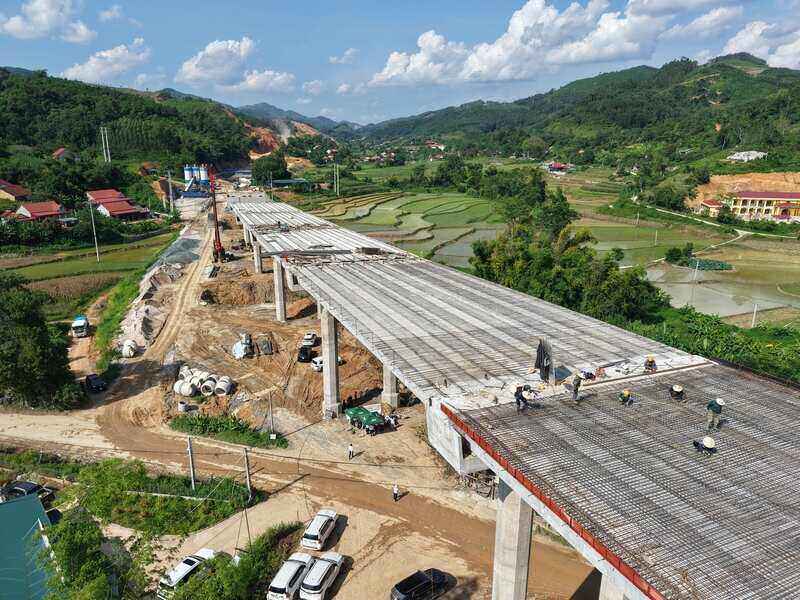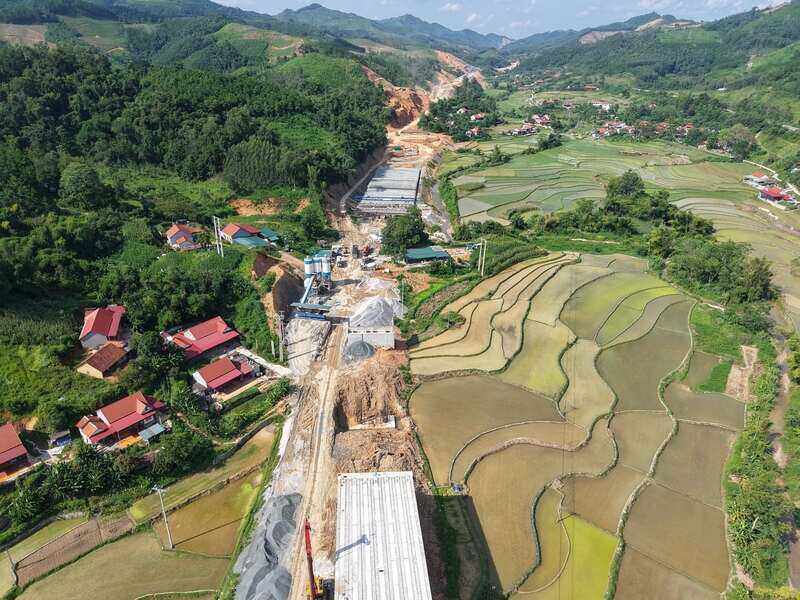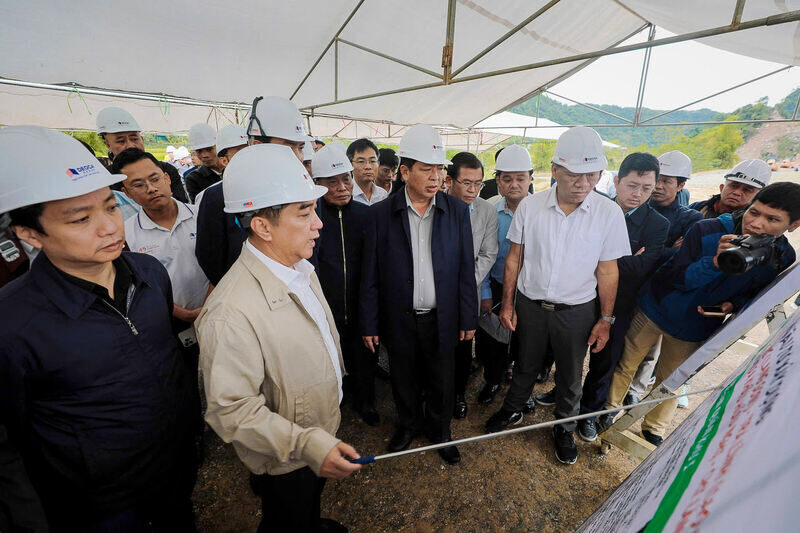Started in April 2024, the Huu Nghi - Chi Lang expressway is nearly 60 km long, passing through 11 communes and wards of Lang Son province, with a total investment of more than 11,000 billion VND.
This is a national key project, opening a strategic traffic axis for the Northeast region, connecting the Vietnam - China border economic corridor.
Currently, the entire project is implementing 143 construction teams, mobilizing 2,820 personnel and 1,240 equipment. The construction output has reached more than 51% of the contract value, equivalent to VND 3,376/6,580 billion.

At Km22+300, Dong Kinh ward, the working atmosphere is bustling.
Many sections of the route have been paved with asphalt, crushed stone, and are preparing to hand over the items for installing a traffic safety system, striving for the first 30 km of road to be completed before the Lunar New Year.
In the cold weather in the early winter of Lang Son, fog still hangs on the mountain slopes, the sound of excavators and rolling cars still resounds regularly. Each group of workers wore reflective vests and protective hats, quietly working next to the giant concrete blocks.

Along the route through Nhan Ly commune, dozens of trucks lined up to transport materials.
Mr. Nguyen Minh Binh, a long-time worker, said in a loudspeaker: "Working in the border area is very difficult, when there is a flood, it will collapse, when the sun is strong, it will be dusty. But everyone understands that when this road is opened, it will make it easier for our people to travel, and goods to cross the border more conveniently, so if we can try, just do it."
At an overpass construction site, the construction teams are meticulously checking each steel beam block before welding it coly.
Although progress is being accelerated, land problems are still the biggest "bottleneck".

The entire route still has 38 households that have not been relocated, 4 agricultural land locations have not been handed over, and 84 households in Dong Dang commune are subject to clearance in the technical design step.
There are 11 locations for technical infrastructure that have not been relocated and some sections of the route have not been determined for dumping locations, affecting the progress of roadbed construction.
Mr. Truong Duc Lien - Deputy General Director of the project enterprise - said that in the context of only about 40 days before the deadline for the route, the units are proactively adjusting the construction organization appropriately, ensuring that the service road, bridge, culvert, and embankment are suitable for construction; storing materials, gathering structures, speeding up processing.
According to Mr. Lien, this year's rainy season, Lang Son is affected by many storms, causing floods and landslides.

According to data from the Lang Son Hydrometeorological Station, from May to October 2025, the average number of rainy days is from 20-22 days/month.
The circulation of storms No. 10 and 11 alone caused damage to contractors of about 3 billion VND, causing the progress of the entire project to stagnate, although the construction force increased 1.5-2 times the number of human resources and machinery to overcome harsh weather conditions.
"We will mobilize maximum human resources and machinery, prioritize the construction of sections to ensure conditions, and at the same time review and adjust the construction organization plan appropriately," Mr. Truong Duc Lien emphasized.
On November 10, a working group of the Ministry of Construction led by Mr. Tran Hong Minh - Minister of Construction - inspected the implementation of the two expressway projects Dong Dang (Lang Son) - Tra Linh (Cao Bang) and Huu Nghi - Chi Lang.
Minister Tran Hong Minh highly appreciated the drastic participation of the leaders of the two provinces, helping the site clearance work achieve outstanding results, but still noted that some remaining positions need to be thoroughly handled.
He requested the People's Committee of Lang Son province to continue to focus on directing and resolving the problems, approving the compensation plan to pay to the people soon; at the same time, speeding up the construction of resettlement areas, arranging temporary housing, and mobilizing people to hand over construction sites seamlessly.











